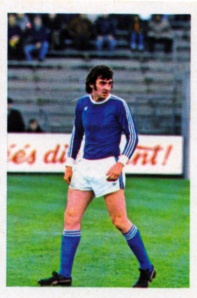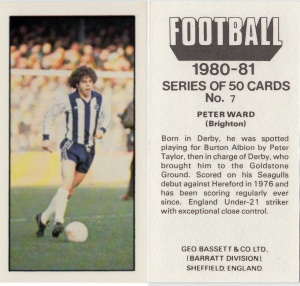I found this amazing artist’s impression of the club’s proposed new home in a copy of the Evening Argus in 1983. It’s rather laughable now to see the suggested design captured by this rather primitive looking sketch. Even more laughable that it’s so talked up:
Architects will tour the United States before drawing up final plans for Albion’s £8 million super stadium.
Henry Carn, of the Hove firm of Morgan, Carn and Partners, believes a two-month stay would be needed to catch up with advances in design.
They are determined not to make mistakes like that which occurred with one U.S. stadium which generated its own atmosphere… and thunderstorms.
Albion’s planned stadium is currently designed with 25,000 seats, although Chairman Mike Bamber might opt for 20,000 seats and space for 10,000 standing fans.
Areas under the seating would be for office use or other sporting activities. Around the playing pitch would be a running track to attract local and regional athletics meetings.
I wonder at what point was a consensus reached that athletics tracks spelled bad news, with the cost to the atmosphere at football games eclipsing the financial gain of athletics events. Certainly not in 1983. At least not here. Of course, Brighton fans did end up watching home games on a pitch surrounded by an athletics track – at Withdean Stadium from 1999 to 2011.
The structure above ground would be ringed by precast concrete arms. Between these would be overlapping concrete planks which allow in air but keep out rain. The roof cover would be made of polycarbonate translucent sheeting hung from steel masts and cables.
That would be some eyesore! If we had got this design, would we have been stuck with it?
The sheeting would allow natural light through to the playing area while artificial lighting would be slung below the inner edge of the overlapping concrete roof planks.
Like Mr Bamber, Mr Carn believes fans now demand much better facilities than the Goldstone Ground offers.
“It’s not necesarily just the men who want to see matches now. Soccer is much more a family activity and you need facilities that accommodate families and cut out the aggro we see at grounds today,” he says.
In April 1983, East Sussex County Council’s Policy and Resources Committee offered to hold talks with the club on a new home. It was envisaged that the stadium could be built at any of half a dozen sites on the outskirts of Brighton. Mike Bamber most favoured the site of Waterhall, off Mill Hill:
Close to the proposed Brighton bypass and the main Brighton-London rail line, the site would be easy for fans to reach. But it’s not just soccer fans that would benefit from the development, Sitting in his plush American-style offices in Hove Street, the property millionaire outlined his thoughts on how the stadium would be financed and its variety of uses.
“All we would need from council is the land – the rest won’t cost a penny,” he said.
A supermarket concern would pay for the stadium in exchange for approval to build a giant superstore. Parking space for thousands of cars would be provided for shoppers in the daytime and fans in the evening or at weekends. The development would be set low in the valley to protect the natural beauty of the surrounding Downs. And with soccer being played only once or twice a week, the complex would become a multi-purpose community centre.
Gyms, squash courts, athletics tracks and clubs could be established at the stadium and the main hall would cater to community events and major entertainment. It’s a concept well advanced in North America and one the Government in this country is thought to favour. There would be other benefits for Albion. The sale of the Goldstone would wipe out the club’s debts and put them back into black.
Youth team football pitches adjoining the new stadium could provide valuable prospects for the team. Mr Bamber rejects the idea that the complex would drive trade out of the town centre and he insists the facilities will generate their own business. “I expect to get opposition but I believe we will win through in the end,” he said. “We have a team in the FA Cup Final. All that’s missing is a decent ground. The new stadium will be great for the community and I’m convinced it will bring back the missing fans.”
His big dream since becoming chairman eight years ago, Mr Bamber believes the stadium could be the first of many in Britain and would rival some of the greatest centres in Europe. “People are much more upmarket these days,” he said. “The days of the cloth-cap terraces and the cup of tea and hotdog stands are over.”
Sadly. relegation from Division One, financial difficulties and boardroom unrest took their toll on Mike Bamber. He suffered a heart attack in March 1984 and resigned as chairman and director in July, citing ‘major and mutual disagreements on policy.’ As a result, his plans for a stadium never got off the ground.

























